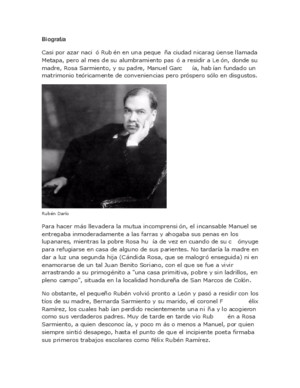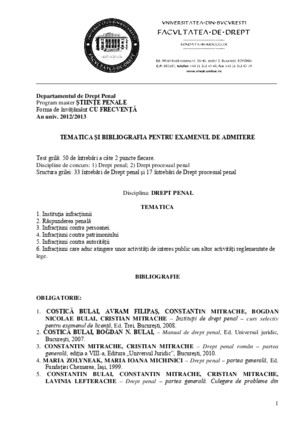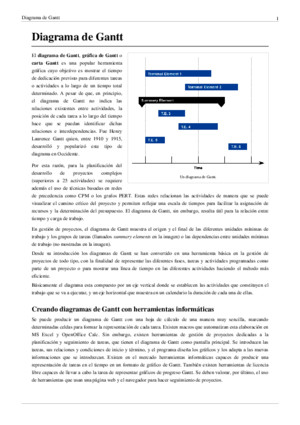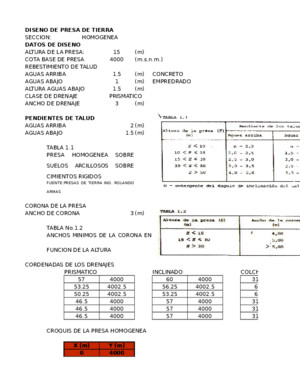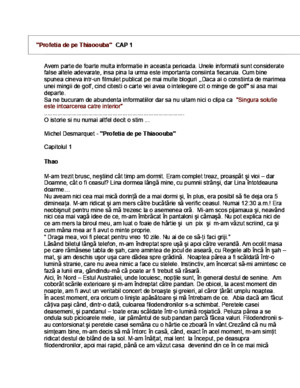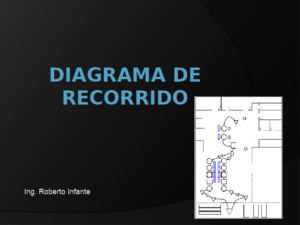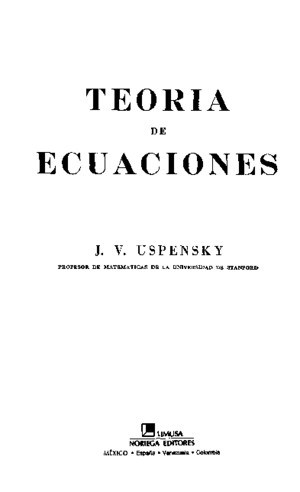Biografia de Timoshenko
There is document - Biografia de Timoshenko available here for reading and downloading. Use the download button below or simple online reader.
The file extension - PDF and ranks to the Documents category.
Tags
Related
Comments
Log in to leave a message!
Description
Download Biografia de Timoshenko
Transcripts
STRUCTURE magazine G REAT A CHIEVEMENTS notable structural engineersAugust 2007 68 Stephen P Timoshenko Father of Engineering Mechanics in the US By Richard G Weingardt, PE Stephen Timoshenko was born Stepan Prokofyevich Timofeyevich on December 23, 1878, in the tiny village of Shpotovka, on the steppes of Ukraine, 130 miles east of Kiev He was oldest son of Prokop Timofeyevich (Timoshenko), a hardworking commoner who was becoming a successful self-made man Although Ukraine had been part of Russia for a long time when Stephen arrived, many of its residents spoke Russian with a distinct Ukrainian dialect Prokop, who was 31 years old when his first son arrived, was born in a small cottage owned by Stepan Kandyba, a well-to-do Ukrainian landowner Kandyba was married to Prokop’s older sister and young Prokop was brought up as part of the Kandyba family with similar privileges He studied land surveying and went into the business as an independent surveyor Later, he became a landowner of means, so his three sons – Stephen and his younger brothers Serhij and Vladimir – grew up in a comfortable middle-class setting Stephen received his secondary schooling in the nearby river town of Romny from 1889 until 1896, where his outstanding subject was mathematics Even though he was well-read in the Russian classics, languages were his least successful subjects – and his Russian had a strong Ukrainian accent (a lifetime characteristic) While Stephen was in grade school, the Trans-Siberian Railroad project (1891-1916) began making its way between Moscow and Vladivostok, and with his proficiency in math and the sciences he dreamed of becoming a railroad engineer After earning a gold medal for superior scholarship at Romny and passing his uni-versity entrance examinations with flying colors, he was accepted at the highly regarded Institute of Engineers of Ways of Commu-nication (IEWC) at St Petersburg While a student at IEWC, Stephen made two trips to Western Europe during school vacations In addition to stimulating his thinking and vi-sion, the excursions were the beginning of a lifelong pattern, one that allowed him to de-velop close associations with top professionals in his field After graduating in 1901, Timoshenko took a teaching position at IEWC, while serving a year of compulsory military service In 1902, following this service, the 24-year-old Timoshenko married Alexandra Archangelskaya, a medical school student They would have three children – Gregory, Marina and Anna Gregory would become an electrical engineer (for years a professor of electrical engineering at the University of Connecticut) Marina would marry a prominent Stanford Professor, JN Goodier (who was the co-author with Timoshenko of the textbook Theory of Elasticity ) Anna would move to Germany, where she would provide a retreat for her father in his twilight years In 1903, Timoshenko became an engineering instructor at the newly organized Polytechnic Institute of St Petersburg (PISP) His time at PISP marked the beginning of Timosenko’s creative scientific work and induced him to become a teacher rather than a practic-ing engineerThe school year of 1904-1905 was greatly influenced by political turmoil The disastrous Japanese War, during which the Russian Stephen P Timoshenko Courtesy of the Stanford University Timoshenko ArchivesSculpture of Timoshenko in the lobby of the mechanical engineering building at Stanford University Courtesy of Richard Weingardt Consultants, Inc When theoretical and applied mechanics are discussed, the name of Stephen Timoshenko is invoked with awe His accomplishments in the field of engineering and his impact on education worldwide were unprecedented His seminal books on the strength of materials, elasticity, structural stability and buckling remain in wide use today, even though the first one was introduced nearly a century ago As the father of engineering mechanics in the US, Timoshenko assembled an internationally famous faculty in the early to mid-1900s while at the universities of Michigan and Stanford He was a magnet for students and scholars from all over the world, and the list of his former pupils contains a virtual ‘Who’s Who’ in the field Timoshenko’s “gold standard” textbooks (and many technical papers) have greatly influenced generations of structural engineers His writings, published in several languages, range from those for the first undergraduate course to those for advanced graduate students and research workers His best-known textbook Strength of Materials, first published in Russia in 1911, was translated into English in 1930 STRUCTURE magazineAugust 2007 69 Army was humiliated, increased student demonstrations and general unrest PISP was closed and Timoshenko left without a job He used the time to travel to Europe and do advanced studies in Germany at the Munich Polytechnic Institute and at the University of Gottingen It was during this period that Timoshenko developed a growing passion for the practical application of theoretical mechanics – and in the subjects of elastic stability, buckling, torsion and the strength of structural membersIn the fall of 1906, Timoshenko became a professor at the Polytechnic Institute in Kiev (PIK), in charge of its strength of materials division This return to his native Ukraine in such a high position was a personal triumph In 1909, he was elected dean of the structural engineering department While at PIK, he worked on the finite element method of elastic calculations and refined his pioneering work in structural buckling, deflections and elastic stability – and he published the first version of his famous strength of materials textbookIn 1911, Russia’s continuing political turmoil reached a fever pitch and along with it came increasing student disorder on campuses Timsohenko and two other professors signed a protest against the minister of education They were summarily fired Ironically, Timoshenko was awarded the 1911 Zhukovsky Prize from the Russian Academy of Science for his outstanding work With the prize came a medal and a monetary award of 2,500 gold rubles, which helped ease the sting of being unemployed With some of the money Timoshenko and his wife took an extended trip to Europe and then England, where he attended a mathematical congress in Cambridge There, for the first time, he met notable English-speaking leaders in his profession, giants in the field, like Lord Rayleigh and AE Love After returning to Russia in the fall of 1912, Timoshenko secured part-time teaching assignments at several schools in St Petersburg, including being a guest lecturer at his alma mater IEWC He also did consulting work on the elastic stabil-ity of ship bulkheads for the Naval Minis-try of St Petersburg Timoshenko’s period of disgrace with Russian authorities formally ended in 1913 when he was hired as a full-time professor at IEWC In the summer of 1914, while he and his family were on a summer vacation on the Baltic, World War I started With it came the beginning of the end of the old world order as known by Timoshenko and other educated Rus-sians of means Timoshenko returned to university life in St Petersburg amid very unsettling times His country was not faring well in the war, and the Tsar’s control of his subjects was crumbling at a dizzying pace As battle losses mounted and living conditions deteriorated, all social order continued Popular Timoshenko textbooks Courtesy of Richard Weingardt Consultants, Inc A D V E R T I S E ME NT –F or A d v er t i s er I nf or m at i on , v i s i t w w w S T R U C T U R E m a g or g Timoshenko’s textbooks: 1) Strength of Materials 2) History of Strength of Materials 3) Theory of Plates and Shells 4) Elements of Strength of Materials 5) Vibration Problems in Engineering 6) Advanced Dynamics 7) Theory of Elasticity 8) Theory of Elastic Stability 9) Applied Elasticity 10) Mechanics of Materials 11) Theory of Structures 12) Engineering Mechanics In addition to his textbooks, Timoshenko wrote two other books, Engineering Education in Russia and As I Remember , an autobiography, first published in Russian in 1963 then translated into English in 1968 STRUCTURE magazineAugust 2007 70 Cover of the popular Mechanics of Materials textbook written by James Gere and his mentor Stephen Timoshenko Courtesy of Richard Weingardt Consultants, Inc to disintegrate rapidly Nicholas II abdicated his throne in February 1917, and the Russian Revolution officially began Shortly after a provisional government was formed, it was toppled by the Bolsheviks led by Lenin and Trotsky The Tsar and his family were taken prisoners – and executed a year later Amid the country’s involvement in WWI, a civil war raged between the Reds (the Bolsheviks) and the Whites (the anti-Bolsheviks) In 1920, the Red Army took over Kiev af-ter defeating the White Army, with which Timoshenko had been aligned He now had no choice but to leave the country Abandon-ing all their possessions, the Timoshenkos took the last refugee freight train out of Kiev During their exodus, they managed to stay just one step ahead of the Bolshevik Cavalry, which was in hot pursuit Timoshenko was helped on several occasions by former pu-pils – and once was provided much-needed safe harbor by an admirer who had read one of his books Years later, Timoshenko would tell his students at Stanford, “That was the most practical and useful result of all of my writings!”Once safely out of Russia and beyond the reach of the Bolsheviks, Timoshenko secured a professorship at the Zagreb Polytechnic In-stitute in Yugoslavia During his time there, he hired a tutor to help improve his English, and to help him translate some of his pa-pers into English He sent the translations to Love, who had them published in England Through this process the name of Timoshenko began to be known to English-speaking theo-retical and applied mechanics scholars In 1922, Timoshenko was offered a position with the Vibration Specialty Company (VSC) in Philadelphia, Pennsylvania The offer was too good to turn down, so he crossed the At-lantic Ocean and, for the first time, stepped on American soil Timoshenko came alone, not sure how things would pan out Later, when convinced that the prospects looked good, he sent for his family After working at VSC for a year, Timoshenko moved to Pittsburgh joining the Research Laboratories of the Westinghouse Electric Corporation (WEC) Richard Soderberg, an emerging young star at WEC at the time, said, “He was in his forties, had a striking appearance, wore a beard, and to younger members of our group who came under his influence, he was a wise old man with a keen sense of humor” Soderberg, who accompanied Timoshenko to several international conferences, was much impressed by “the enormous range of his acquaintances in the scientific world, acquired from his years of travel and the wide distribution of his writings and theories”In 1927, Timoshenko was invited to join the faculty at the University of Michigan as Professor of Graduate Mechanics There he created its first bachelors and doctoral programs in the field, inaugurating a new era of applied mechanics in the US It was while at Michigan that Timoshenko published some of his most famous textbooksIn 1936, Timoshenko was offered a professorship at Stanford University, a position that he held until his “retirement” in 1944 Actually, he continued teaching and writing at Stanford for another decadePersonal stories by Stanford students and peers about their encounters with (or impressions of) Timoshenko are consistent He was mysterious; a god-like figure with an aristocratic bearing; distinguished, tall and imposing – and pleasant He took a trip to Europe almost every year, usually to Switzerland, Germany or England – and always by ship He didn’t like airplanes; didn’t know how to drive; and didn’t like to use the telephone According to James Gere, Timoshenko always showed up for class on the dot, no matter what He recalled one time when Timoshenko had been overseas and had not been seen on campus for some time, then James Gere, Timoshenko protégé, colleague and friend, holding the book they wrote together, in front of Timoshenko’s rare book collection at Stanford Courtesy of Richard Weingardt Consultants, Inc
Recommended



